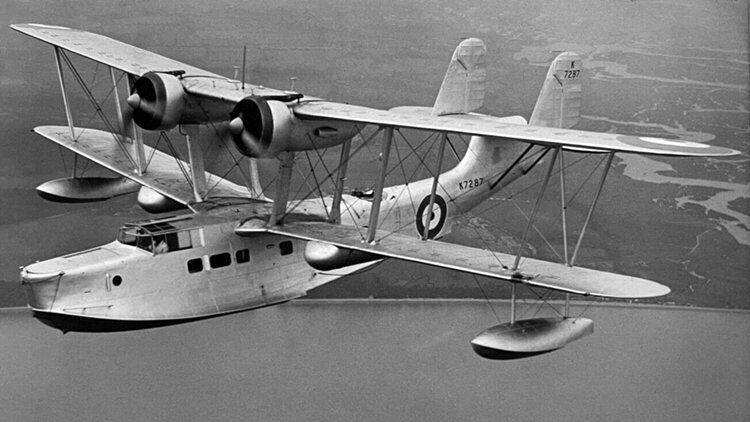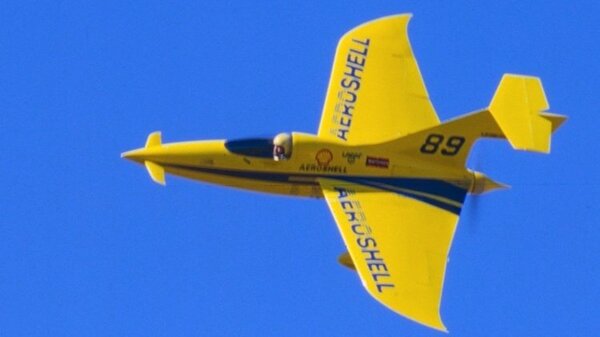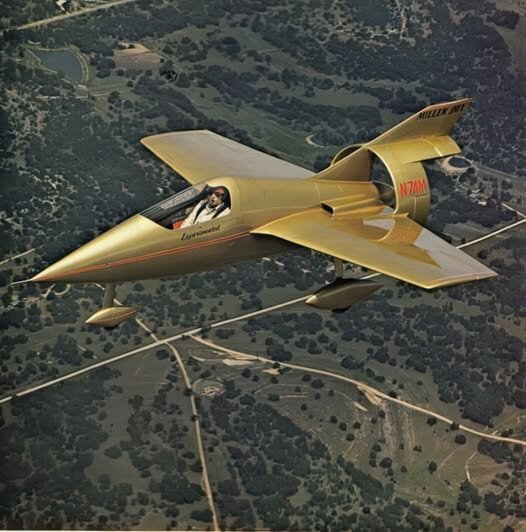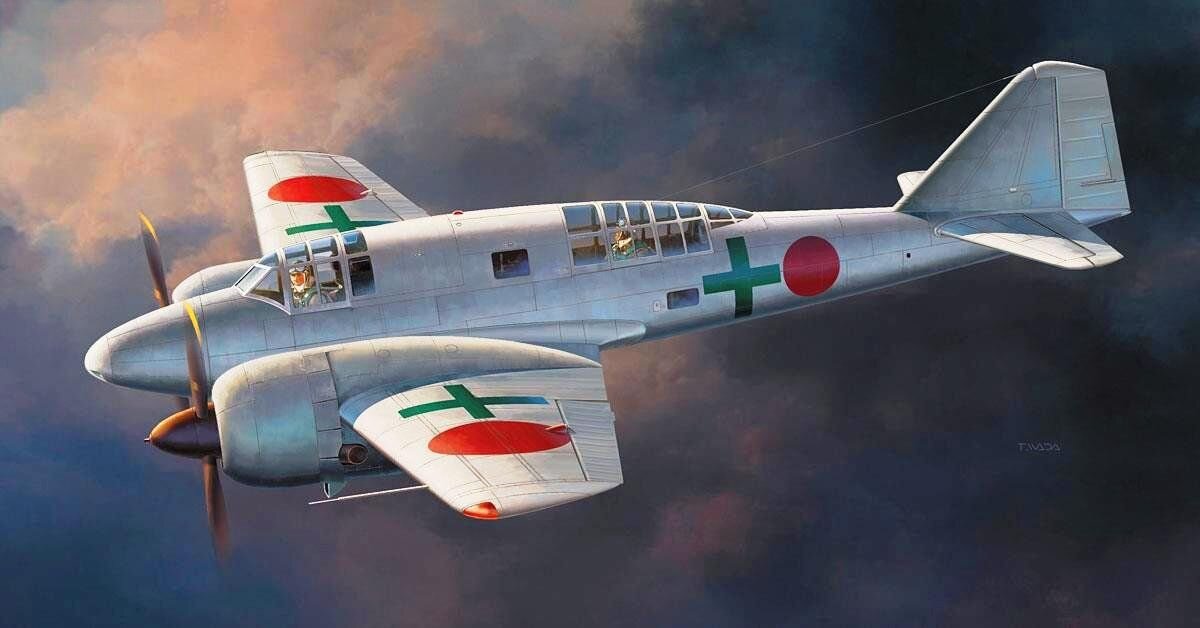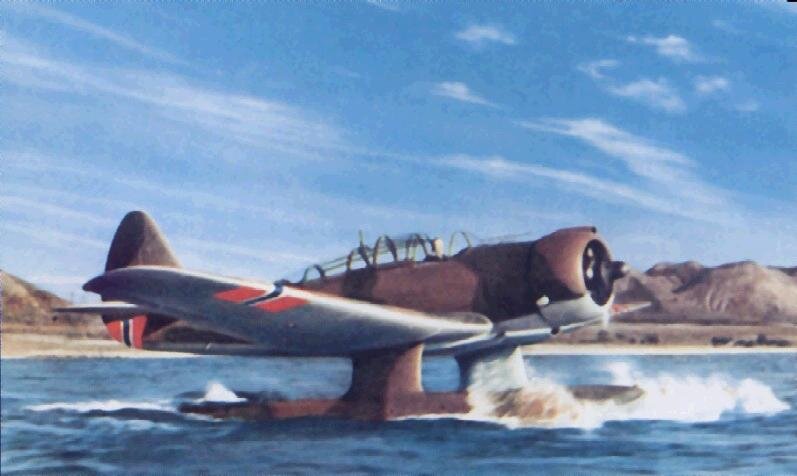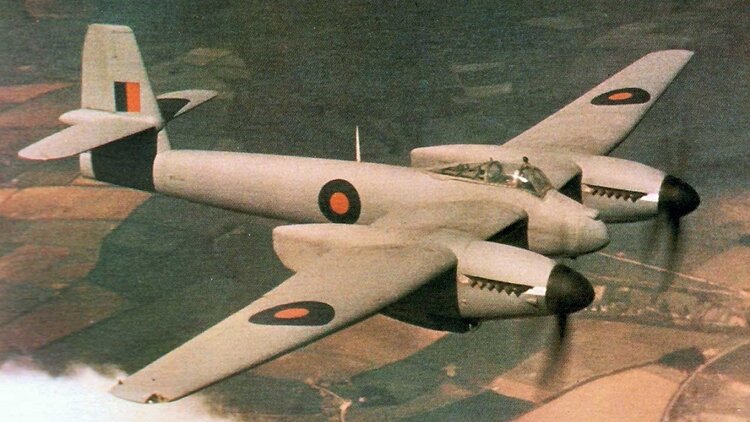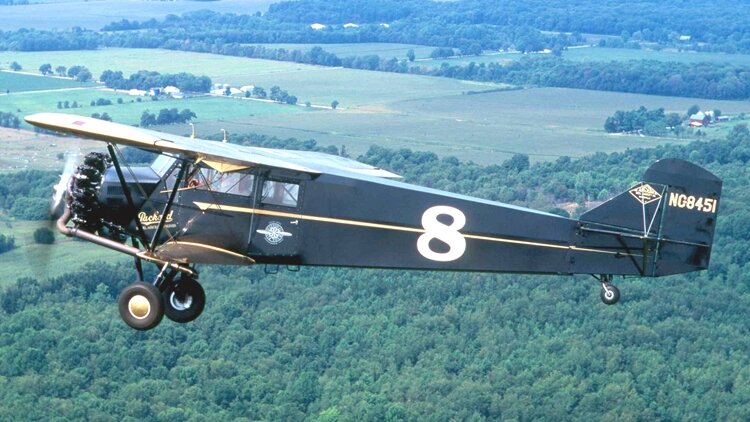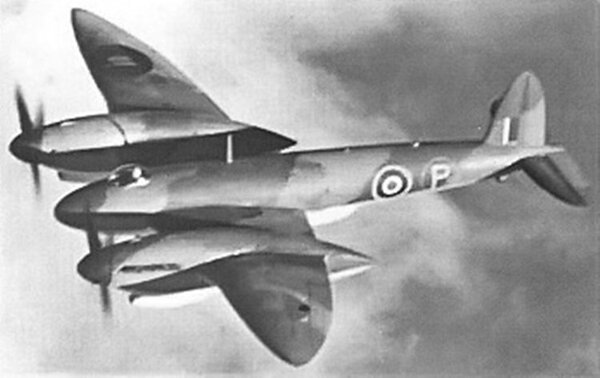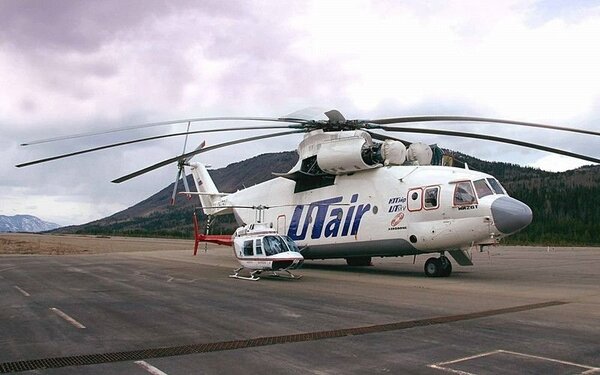-
Posts
7,757 -
Joined
-
Last visited
-
Days Won
67
Content Type
Profiles
Forums
Gallery
Downloads
Blogs
Events
Store
Aircraft
Resources
Tutorials
Articles
Classifieds
Movies
Books
Community Map
Quizzes
Videos Directory
Everything posted by red750
-
Lithuanian Vladas Kensgaila began work on the prototype Kensgaila VK-9 in 1994. Compared to contemporary aircraft like the Tu-24, it looked very modern with a streamlined fuselage, winglets and a retractable tricycle landing gear. Much of the aeroplanes structure was made of class fibre plastic composite material. It was a low wing monoplane and was built at the Kensgaila Aircraft Plant (factory?) at the former Lithuanian Air National Guard field at Stetiskiai near Paneveyzs. Only one unit produced. ENGINE: 1 x M-14PS (360 hp) WING SPAN: 14.0 m LENGTH: 10.24 m HEIGHT: 3.94 m WING AREA: 26 sq m EMPTY WEIGHT: 1,200 kgs MAXIMUM TAKE OFF WEIGHT: 2,400 kgs ACCOMODATION: 6 passengers CRUISING SPEED: 350 km/ph RANGE: 2,000 kms with 45 minutes reserve TAKE-OFF RUN: 200 m LANDING RUN: 250 m FIRST FLIGHT: 1996 PRODUCTION: 1 G-LIMITS: +5 / -2.5 These details were the only ones I could locate, and came from Secret Projects forum. No Wikipedia page.
-
The Bell 533 was a research helicopter built by Bell Helicopter under contract with the United States Army during the 1960s, to explore the limits and conditions experienced by helicopter rotors at high airspeeds. The helicopter was a YH-40—a preproduction version of the UH-1 Iroquois—modified and tested in several helicopter and compound helicopter configurations. The Bell 533 was referred to as the High Performance Helicopter (HPH) by the Army, and reached a top speed of 274.6 knots (508.6 km/h; 316.0 mph) in 1969, before being retired. The U.S. Army began a program to study improvements to current helicopters that could be demonstrated by testing. Analyses by three helicopter companies showed that performance could be greatly improved. Bell Helicopter was one of the participants and investigated improvements to the UH-1B Iroquois. After the study, Bell submitted a proposal for the High Performance Helicopter. On 7 August 1961, the Army's Transportation Research and Engineering Command (TRECOM) awarded a contract to Bell Helicopter for a high-performance helicopter to conduct research. In response, Bell built the Model 533 from a YH-40-BF, one of the six preproduction UH-1s. The dynamic components of the YH-40 were updated with components designed for the UH-1B. The research for the contract was split into two phases; phase one would be to determine the benefits of an overall reduction in drag, phase two would determine the benefits of auxiliary thrust. The Bell 533 was flight tested in three main configurations. The first configuration was the basic YH-40 helicopter with drag reduction changes. The second configuration added a pair of jet engines for additional thrust. The third configuration added swept wings for extra lift. Second configuration. Third configuration.
-
The Martin XB-48 was an American medium jet bomber developed in the mid-1940s. It competed with the Boeing B-47 Stratojet, which proved to be a superior design, and was largely considered as a backup plan in case the B-47 ran into development problems. It never saw production or active duty, and only two prototypes, serial numbers 45-59585 and 45-59586, were built. In 1944, the U.S. War Department was aware of aviation advances in Germany and issued a requirement for a range of designs for medium bombers weighing from 80,000 pounds (36,000 kg) to more than 200,000 pounds (91,000 kg). Other designs resulting from this competition, sometimes nicknamed "The Class of '45", included the North American XB-45 and the Convair XB-46. Production orders finally went to the North American B-45 Tornado, and even this airplane served only for a couple of years before again being replaced by the much more modern Boeing B-47 Stratojet, although the B-45 had the inherent performance – especially if it was not burdened with a payload – for it to then serve as a reconnaissance aircraft. All of the bombers comprising the Class of '45 were transitional aircraft, which combined the power of turbojets with the aeronautical knowledge of World War II.[citation needed] The XB-48 was no exception, as its round fuselage and unswept wings showed a distinct influence of Martin's B-26 Marauder medium bomber. Still, where the B-26 had enough thrust with two massive 18-cylinder radial engines, the XB-48 needed no less than six of the new jet engines. At the time of the XB-48's design, jet propulsion was still in its infancy. And, although it appeared superficially to have six separate engine nacelles – that is, three under each wing – the XB-48 actually had only two, unusually wide, three-engined nacelles. Each of these large nacelles also contained an intricate set of air ducts that constituted the engines' cooling system. The XB-48 was the first aircraft designed with bicycle-type tandem landing gear, which had previously been tested on a modified B-26. The wing airfoil was too thin to house conventional landing gear mechanisms. The main landing gear was in the fuselage and small outriggers located on each wing were used to balance the aircraft. The XB-48 made its first flight on 22 June 1947, a 37-minute, 73 mi (117 km) hop from Martin's Baltimore, Maryland plant to NAS Patuxent River, Maryland, but blew all four tires on its fore-and-aft mounted undercarriage on landing when pilot Pat Tibbs applied heavy pressure to the specially-designed, but very slow to respond, insensitive air-braking lever. Tibbs and co-pilot Dutch Gelvin were uninjured.
-
Thanks for clarifying, Arron25. I stand corrected.
-
The Supermarine Stranraer is a flying boat designed and built by the British Supermarine Aviation Works company at Woolston, Southampton. It was developed during the 1930s on behalf of its principal operator, the Royal Air Force (RAF). It was the RAF's last and fastest biplane flying boat. Derived from the Supermarine Scapa, the aircraft's design was heavily shaped by Specification R.24/31, issued in 1931. After an initial rejection by the Air Ministry, Supermarine persisted with development as a private venture under the designation Southampton V. During 1933, a contract was placed for a single prototype; it was around this time that the type was named after Stranraer. First flown on 24 July 1934, the Stranraer entered frontline service with the RAF during 1937; most examples of the type were in service by the outbreak of World War II. The Stranraers typically undertook anti-submarine and convoy escort patrols during the early years of the conflict. During March 1941, the model was withdrawn from frontline service, but continued to be operated in a training capacity until October 1942. In addition to the British-built aeroplanes, the Canadian Vickers company in Montreal, Quebec, also manufactured 40 Stranraers under licence for the Royal Canadian Air Force (RCAF). These Canadian Stranraers served in anti-submarine and coastal defence capacities on both Canada's Atlantic and Pacific coasts, and were in regular service until 1946. Following their withdrawal from military service, many ex-RCAF Stranraers were sold off to fledgling regional airlines, with whom they served in various commercial passenger and freighter operations into the 1950s. The Stranraer was a six-seater, twin-engined biplane flying boat. Its empty weight was 11,250 pounds (5,100 kg), with a maximum take-off weight of 19,000 pounds (8,600 kg). As the design of the Stranraer progressed, it was changed from that of the Scapa, having a two-bay structure. The Stranraer's weight, and the surface area and span of its wings, were 12 per cent greater; the elevator was also 7 per cent larger, while the rudders featured trim tabs capable of holding the aircraft straight under single-engine flight. The Rolls-Royce Kestrel was initially considered as a powerplant, but eventually the moderately supercharged Bristol Pegasus IIIM radial engine was selected, . Much of the airframe was alclad, while detailed fittings were made of stainless steel; metal components were anodised as an anti-corrosion measure. For additional strength, a second pair of interplane struts were added. The hull was considerably larger, its cross-section being increased by 18 per cent, yet it had identical hydrodynamic performance. The forward gun was redesigned to be retractable, the middle gunner's position was lowered, and a tail gunner position was added just aft of the control surfaces, completed with a hooded windshield. In general, the equipment of which the aircraft was to be fitted with were the result of lessons learnt from operations of the earlier Southamptons. For more details including operational history, click here. A total of 57 aircraft were built.
-
The Ikarus 452M (B-452-2) was a Yugoslav experimental aircraft first revealed in 1953. It was Yugoslavia’s first swept-wing light jet fighter-interceptor. The all-metal aircraft featured retractable nose-wheel landing gear and was the first to incorporate a domestically produced light metal alloy for its fuselage skin. A distinctive aspect of the design was its twin-fin tail unit, an uncommon feature in Yugoslav aviation. The fins were mounted on beams extending from the wings and connected by a V-shaped stabilizer. The aircraft had a 36º wing sweep, with plans to add slats for improved performance. It was powered by two Palas 056A turbojet engines arranged vertically in the fuselage, each fed by separate air intakes. As a technology demonstrator, its armament was minimal, consisting of two 12.7mm Browning machine guns. It was publicly revealed on April 30, 1953. However, a test flight on July 24 ended in an emergency landing due to fuel system failure, severely damaging the aircraft and injuring the test pilot. To address inadequate engine thrust, a three-engine variant (B-452-3) was proposed, with upgraded armament, but it remained at the design stage. A later iteration, the B-452-4, incorporated a more powerful Turbomeca Marbore II engine, an enlarged airframe, and twin 20mm cannons. Intended for both interception and ground attack, it was designed to carry air-to-surface high-velocity aircraft rockets (HVARs). Despite its modern concept, the project was ultimately shelved in favor of the B-12 interceptor. Results of the experimental programme provided a basis for the production of the Soko Galeb. Only two prototypes built.
-
This is rather odd, because there is no indication when these features were added or removed. But a web image search results in as many images with as without, and yet only one example was built. Here is an image with the canard and T-tail.
-
The Miller-Bohannon JM-2 Special, named Pushy Galore, is a one-of-a-kind American homebuilt Formula One racing and record-setting aircraft. It was based upon Jim W Miller's Miller JM-2 design, highly modified by Bruce Bohannon. Bohannon began construction of Pushy Galore in 1988 and first flew it in the early part of 1989, first entering it in a race in June 1989. The aircraft is of three-surface configuration, having a cantilever mid-wing, a single-seat enclosed cockpit under a bubble canopy, fixed main tricycle landing gear with a retractable nose wheel, a t-tail and a nose-mounted canard. It is powered by a single rear-mounted engine in pusher configuration. The aircraft is made from welded steel tubing covered in molded carbon fiber. As required by the Formula One rules, its engine is a 100 hp (75 kW) Continental O-200A. Only one example was ever built.
-
The Mitsubishi Ki-46 was a twin-engine reconnaissance aircraft that was used by the Imperial Japanese Army in World War II. Its Army Shiki designation was Type 100 Command Reconnaissance Aircraft (一〇〇式司令部偵察機); the Allied brevity code name was "Dinah". On 12 December 1937, the Imperial Japanese Army Air Force issued a specification to Mitsubishi for a long-range strategic reconnaissance aircraft to replace the Mitsubishi Ki-15. The specification demanded an endurance of six hours and sufficient speed to evade interception by any fighter in existence or development, but otherwise did not constrain the design by a team led by Tomio Kubo and Jojo Hattori. The resulting design was a twin-engined, low-winged monoplane with a retractable tailwheel undercarriage. It had a small diameter oval fuselage which accommodated a crew of two, with the pilot and observer situated in individual cockpits separated by a large fuel tank. Further fuel tanks were situated in the thin wings both inboard and outboard of the engines, giving a total fuel capacity of 1,490 L (328 imperial gallons). The engines, two Mitsubishi Ha-26s, were housed in close fitting cowlings developed by the Aeronautical Research Institute of the Tokyo Imperial University to reduce drag and improve pilot view. The first prototype aircraft, with the designation Ki-46, flew in November 1939 from the Mitsubishi factory at Kakamigahara, Gifu, north of Nagoya.[3] Tests showed that the Ki-46 was underpowered, and slower than required, only reaching 540 km/h (336 mph) rather than the specified 600 km/h (373 mph). Otherwise, the aircraft tests were successful. As the type was still faster than the Army's latest fighter, the Nakajima Ki-43, as well as the Navy's new A6M2, an initial production batch was ordered as the Army Type 100 Command Reconnaissance Plane Model 1 (Ki-41-I). To solve the performance problems, Mitsubishi fitted Ha-102 engines, which were Ha-26s fitted with a two-speed supercharger, while increasing fuel capacity and reducing empty weight. This version, designated Ki-46-II, first flew in March 1941. It met the speed requirements of the original specification, and was ordered into full-scale production, with deliveries starting in July. Although at first the Ki-46 proved almost immune from interception, the Imperial Japanese Army Air Force realised that improved Allied fighters such as the Supermarine Spitfire and P-38 Lightning could challenge this superiority, and in July 1942, it instructed Mitsubishi to produce a further improved version, the Ki-46-III. This had more powerful, fuel-injected Mitsubishi Ha-112 engines, and a redesigned nose, with a fuel tank ahead of the pilot and a new canopy, smoothly faired from the extreme nose of the aircraft, eliminating the "step" of the earlier versions. The single defensive machine gun of the earlier aircraft was omitted not long into the production run. The new version first flew in December 1942, demonstrating significantly higher speed 630 km/h (391 mph) at 6,000 m (19,700 ft). The performance of the Ki-46-III even proved superior to that of the aircraft intended to replace it (the Tachikawa Ki-70), which as a result did not enter production.[8] During operational testing in March 1944, it was discovered that replacing the engines' single exhaust collector ring with individual pipes provided extra thrust and an increase in top speed to 642 km/h (399 mph). In an attempt to yet further improve the altitude performance of the Ki-46, two prototypes were fitted with exhaust driven turbosupercharged Ha-112-II-Ru engines. This version first flew in February 1944, but only two prototypes were built. Mitsubishi factories made a total of 1,742 examples of all versions (34 x Ki-46-I, 1093 x Ki-46-II, 613 x Ki-46-III, 4 x Ki-46-IV) from 1941 to 1944. For details of operational history and 18 variants, click here.
-
The Northrop N-3PB Nomad was a single-engined American floatplane of the 1940s. Northrop developed the N-3PB as an export model based on the earlier Northrop A-17 design. A total of 24 were purchased by Norway, but were not delivered until after the Fall of Norway during the Second World War. Exiled Norwegian forces used them from 1941, operating from Iceland, for convoy escort, anti-submarine patrols, and training purposes from "Little Norway" in Canada. Within two years of delivery, the design was obsolete for front-line service and the remaining N-3PBs were replaced by larger aircraft in 1943. Following increased international tension surrounding the German annexation of the Sudetenland in 1938, the Norwegian parliament granted extraordinary appropriations to modernize the Norwegian Armed Forces. The Royal Norwegian Navy Air Service (RNNAS) and the Norwegian Army Air Service were prioritized for funds from the 50,000,000 kr Norwegian Neutrality Fund. The RNNAS' share of the funds was reserved to buy 12 Heinkel He 115 torpedo bombers and 24 reconnaissance aircraft, as well as several new naval air stations. The Dornier Do 22, Northrop 8-A, Northrop 2GP and Vultee V-11 GB were considered and proposals retrieved. The commission quickly decided the Vultee V-11 GB was the best aircraft to satisfy both air services' needs. On the part of the Royal Norwegian Air Service, the requirements were for a reconnaissance aircraft with a range of 1,500 km (930 mi), a top speed of no less than 320 km/h (200 mph) and to carry a 900 kg (2,000 lb) torpedo or the equivalent in bombs. On 30 December 1939, Norway sent a purchasing commission to the United States, consisting of a Royal Norwegian Navy Air Service contingent headed by Cmdr. Kristian Østby, and a Norwegian Army Air Service contingent led by Birger Fredrik Motzfeldt. The goal of the commission was to inspect the Vultee V-11, which would serve as a new common reconnaissance bomber for the two air services. Amongst the requirements the commission hoped to fill was replacing the Royal Norwegian Navy Air Service's M.F.11 biplane patrol aircraft. Once in the US, the commission found that Vultee would not be able to deliver the V-11 within a reasonable amount of time so another aircraft had to be found. Motzfeldt quickly found that the Douglas 8A-5N would satisfy the NOAAS' requirements. As the Douglas 8A-5N could not be fitted with floats, Østby continued to look for an aircraft suitable for the RNNAS. After visits to many of the aviation companies in February 1940, Østby determined that only one manufacturer had both a design and available production capacity, Northrop Aircraft Incorporated. The commission ordered 24 floatplanes based on the Model 8-A, renamed the N-3PB, "off the drawing board" (literally, the aircraft being ordered prior to the type having flown) from Northrop on 8 March 1940, at a total cost of 6,550,000 kr to meet this requirement. Half the amount was paid shortly before Operation Weserübung, the German invasion of Norway, on 9 April 1940. The Model 8-A, the export model of the Northrop Attack Bomber series had to be redesigned to meet the requirements of the Norwegian order. The new N-3PB was the first product of Northrop Aircraft, which had reformed in 1939 and was a low-winged cantilever monoplane fitted with twin floats. First intended for a lower-powered engine, the N-3PB was ultimately powered by a Wright Cyclone radial engine, of the same type specified for the Douglas 8A-5N bombers and Curtiss Hawk 75A-8s ordered by Norway at the same time, simplifying the maintenance and operation requirements for the Norwegian military aircraft fleets. With the Norwegian operation requirements drawn up for a coastal reconnaissance floatplane, a series of modifications were requested to the original design. The changes included a redesign of the float structure to accommodate either a torpedo or bomb load carried under the center fuselage to supplement five underwing bomb racks. Additional armament changes led to a combination of six machine guns replacing the four machine guns (two fixed forward, two flexible rear-mounted 7.9 mm)/one cannon (forward facing, fixed 20 mm) arrangement that was in the initial design. Provision for a rear under-fuselage gun was also made. Further equipment requirements including fitting a rear fuselage-mounted camera as well as changes to instruments and radio equipment. Before Northrop could complete any aircraft, Norway was invaded by Germany. The invasion and occupation of Norway necessitated that the armament of the N-3PB, originally to be installed in Norway, had to be changed. Initial specifications listed one Oerlikon 20 mm cannon in each wing, as well as two 7.9 mm Fabrique Nationale machine guns each in the fuselage and rear gunner stations. Owing to the lack of availability of the originally specified armament, Norwegian-manufactured Colt heavy machine guns were substituted with four Colt MG53A .50 cal. machine guns in the wings and two .30 cal. Colt MG40s mounted in dorsal and ventral positions of the gunner's rear cockpit. For details of operational history, click here.
-
The Reid and Sigrist R.S.3 Desford is a British twin-engined, propellor-driven, three-seat advanced trainer aircraft developed in the Second World War for postwar use. Although the R.S.3 was evaluated as a trainer, the type never entered production and was eventually rebuilt as the R.S.4 Bobsleigh as an experimental aircraft with the pilot in a prone position, seen as advantageous in minimising g-force effects in fighter aircraft. Reid and Sigrist in Desford, Leicestershire, England, were an important instrument manufacturer in the interwar era, specialising in aircraft applications leading to the forming of an aviation division in 1937 at the New Malden, Surrey factory site. The first product was a twin-engined advanced trainer, the R.S.1 Snargasher (1939) which was eventually relegated to company hack used primarily at the factory and Desford aerodrome. The follow-up design, the R.S.3 Desford (taking its name from the company site) was similar in size and concept to its predecessor although it was only configured for a pilot and trainee and featured a low-set wing. The R.S.3 was powered by two 130 hp de Havilland Gipsy Major Series I engines, rather than the higher powered de Havilland Gipsy Six engines of the earlier R.S.1. The prototype, registered as G-AGOS first flew on 9 July 1945, shortly before VJ Day. Evaluated as a private venture project by test pilots including famed postwar flyer, Janusz Żurakowski at the Aeroplane and Armament Experimental Establishment (A&AEE) at RAF Boscombe Down, the R.S.3 was generally found to be well suited as a multi-engine primary and intermediate trainer. However, RAF interest was lukewarm due to the glut of surplus wartime training aircraft available. The prototype appeared at the Farnborough Airshow in 1946, and was allocated to the Institute of Aviation Medicine but by May 1949, it was deregistered as a civilian aircraft, flying subsequently with RAF serial number VZ728. Further development of the type continued as the company wanted to establish itself as an aviation engineering and production concern although its postwar work primarily centred on instrument and camera production, especially in creating a copy of the German Leica. When Royal Air Force high-speed research explored high g-forces encountered in manoeuvres, a number of prone-pilot experimental aircraft including the Gloster Meteor F8 "Prone Pilot" were produced. To investigate low-speed applications, the R.S.4 Bobsleigh was a radical conversion of the R.S.3 reconfigured into a single pilot operation with a prone pilot station in the new rounded nose. This section was equipped with a transparent cone which covered a large section of the nose and two separate transparent ports to give minimal sideways and rearwards views. The R.S.4 was first flown in this form on 13 June 1951. Although useful data was obtained, the R.S.4's prone pilot did have difficulty with the initial control setup. Today's hang glider pilots have found the prone position an ideal means of controlling flight as well as providing a streamlined profile. Experimental testing was conducted by the Royal Aircraft Establishment (RAE) at Farnborough and continued until January 1956 when the R.S.4 returned to the UK civil registry, again as G-AGOS. It was used at one time as an air photo aircraft by Film Aviation Services and remained in flyable condition until 1973. After a period at the Snibston Discovery Park, the R.S.4 was moved to Spanhoe, Northamptonshire for restoration by Windmill Aviation. The restored Desford flew again on 22 April 2018, but the aircraft's owners, Leicestershire County Council, did not publicly display the Desford. The Desford was delivered to the Newark Air Museum on 19 August 2022. R.S.3 Desford R.S.4 Bobsleigh
-
The Westland Welkin was a British twin-engine heavy fighter from the Westland Aircraft Company, designed to fight at extremely high altitudes, in the stratosphere; the word welkin meaning "the vault of heaven" or the upper atmosphere. First conceived in 1940, the plane was built in response to the arrival of modified Junkers Ju 86P bombers flying reconnaissance missions, which suggested the Luftwaffe might attempt to re-open the bombing of England from high altitude. Construction was from 1942 to 1943. The threat never materialised; consequently, Westland produced only a small number of Welkins and few of these flew. Westland put forward their P.14, essentially an adaptation of Westland's Whirlwind fighter layout (and a more experimental twin, the P.13) to meet Air Ministry Specification F.4 of 1940 for a high altitude fighter. The most obvious feature was the enormous high aspect ratio wing, with a span on the production aircraft of 70 feet (21 m). The compact but troublesome Rolls-Royce Peregrine engines of the Whirlwind were replaced by the more powerful two-stage Rolls-Royce Merlin Mk.76/77. The most significant feature was a pressurised cockpit, which took the majority of effort in the design. After extensive development a new cockpit was developed that was built out of heavy-gauge duraluminium bolted directly to the front of the main spar. The cockpit hood used an internal layer of thick perspex to hold the pressure, and an outer thin layer to form a smooth line. Heated air was blown between the two to keep the canopy clear of frost. In January 1941, the Ministry of Aircraft Production authorised the building of two P.14 prototypes DG558 & DG562. The F.4/40 specification was revised into F.7/41 that year. The Welkin design was now in competition with the Vickers Type 432 with Merlin 61 engines. The pressurisation system was driven by a Rotol supercharger attached to the left-hand engine (this was the difference between the Merlin 76 and 77), providing a constant pressure of 3.5 psi (24 kPa) over the exterior pressure. This resulted in an apparent cabin altitude of 24,000 feet (7,300 m) when the aircraft was operating at its design altitude of 45,000 ft (14,000 m). This cabin altitude was still too high for normal breathing, so the pilot had to wear an oxygen mask during flight. A rubber gasket filled with the pressurized air sealed the canopy when the system was turned on, and a valve ensured the pressure was controlled automatically. Moreover, the pilot also had to wear a high altitude suit as he might have been required to bail out at altitude. The Welkin required a sophisticated electrical system. This was to minimise the number of seals and points of entry in the cockpit for the controls and instrumentation. It took an electrician experienced in the features of the Welkin four hours to undertake a pre-flight check of this system. The wings were so large that the high lift Fowler flaps of the Whirlwind were not needed, and were replaced by a simple split flap. The extra wing area also required more stability, so the tail was lengthened to provide a longer moment arm. The armament − four Hispano 20 mm cannon − was the same as the Whirlwind's, but the Welkin carried the guns in a tray in its belly, which facilitated loading. In that position, muzzle flash was also less likely to dazzle the pilot. The Welkin was seriously handicapped by compressibility problems caused by its long, high aspect-ratio wing which needed to be thick at the root (thickness-to-chord ratio of about 19%) for strength reasons. Compressibility caused the flight envelope (flyable speed range) between high-incidence stall and shock-stall to become very small at high altitudes – any decrease in airspeed causing a "normal" stall, any increase causing a shock-stall due to the aircraft's limiting critical Mach number. This reduction of the speed envelope is a problem common to all subsonic high-altitude designs and also occurred with the later Lockheed U-2. When W.E.W. Petter came to design his next high-altitude aircraft, the English Electric Canberra jet bomber, the required wing area was distinguished by noticeably short wings, with thickness-to-chord ratio (t/c) at the root of 12%, a t/c ratio which delays compressibility effects to an aircraft speed of about Mach 0.85. Information on the Welkin was only released at the end of the war. A two-seat radar-equipped night fighter version known as the Welkin NF.Mk.II for specification F.9/43 was developed but only one was eventually produced as the variant was not ordered into production. By the time the Welkin Mk.I was complete and in production, it was apparent that the Luftwaffe was no longer conducting high altitude missions, due largely to successful interceptions by specially modified Supermarine Spitfires. Only 77 complete Welkins were produced, plus a further 26 as engine-less airframes.[10] Although two Welkins served with the Fighter Interception Unit based at RAF Wittering from May to November 1944, where they were used to gain experience and formulate tactics for high altitude fighter operations, the Welkin was never used operationally by the RAF. Variants P.14: Two prototypes built to meet Air Ministry Specification F.7/41. Welkin Mk.I : Single-seat twin-engine high altitude fighter aircraft, 75 built, further 26 aircraft were completed without engines. Welkin Mk.II : Two-seat night fighter prototype, one converted from Mark I.
-
The Buhl AirSedan was a family of American civil cabin sesquiplane aircraft developed and manufactured by the Buhl Aircraft Company in the late 1920s. One example completed the first transcontinental non-stop roundtrip flight, made in 1929 by the CA-6 Spokane Sun-God, and the first Pope to have flown did so in a Buhl Airsedan. The Airsedan series were designed by Etienne Dormoy following the departure of Alfred V. Verville from Buhl, with whom he had worked previously. Dormoy had worked with Deperdussin before World War I, flew combat operations during the war before returning to work with SPAD, travelled to the US to coordinate production of SPADs with Curtiss until the project was cancelled with the end of the war. He then worked with Packard on automobiles for a year in 1919 before working as a civilian with the United States Army Air Corps with Verville, who convinced him to work at Buhl. As a Frenchman, he was familiar with the advantages of the sesquiplane concept as it was a popular configuration in France, such as with the Breguet 26T airliner, but rare in the US. The fuselage framework, lower wing and empennage were welded chromium-molybdenum alloy steel tubes faired with wooden battens, with the lower wing integral with the fuselage structure. The upper wings were built around spruce spars, with built up ribs made from spruce and plywood. The entire airframe was covered with doped aircraft-grade fabric. To reduce control forces, projecting aerodynamic balance horns on rudder and elevators, while inset aerodynamic horns were used on the ailerons, which were fitted to the upper wing only. To provide trim control, the rudder was ground adjustable while the elevators could be adjustable in flight. Depending on the models, three different designs of lower wings were used - either constant chord with reversed N struts on the CA-5, a triangular wing with a vee strut on the CA-3, CA-6 and CA-8, or a constant chord wing with two rigged struts, on Canadian built CA-6Ms. All were conventional sesquiplanes with fully enclosed cockpits, fitted with dual controls in front of a passenger cabin. The number in the designation generally referred to the number of occupants as originally designed, with a larger number of seats corresponding to a larger airframe. The first variant built was the CA-5, while later variants had a much slimmer fuselage, a greatly improved windscreen design and a modified cockpit. The CA-5 had the undercarriage legs connected to the fuselage, and part way out from the fuselage, on the lower wing. The CA-3 had the undercarriage mounted solely to the fuselage, while the CA-6 and CA-8 had additional bracing struts from the top of the fuselage to the lower wing which allowed the undercarriage track to be widened. Buhl asserted that its undercarriage design reduced camber changes during landing, and the tendency to yaw due to bumpy ground. The CA-6 was certified to use Edo J-5300 floats. Canadian production. After Buhl had ceased operations in 1932 due to declining sales as the Great Depression deepened, the drawings and jigs were purchased by the Ontario Provincial Air Service (OPAS) in Canada who then built four CA-6M's for use as fire spotting aircraft at their facility in Sault Ste. Marie between 1935 and 1937. These differed from the original aircraft in having Canadian Vickers floats, a new fin and rudder and larger lower wings. Due to the excessive weight of the Canadian-Vickers built floats, the first Ontario Provincial Air Service-built CA-6M refused to leave the water until given a more powerful 440 hp (330 kW) Pratt & Whitney Wasp engine. For details of opertational history and 20 variants, click here.
-

Six dead in chopper crash in Hudson River, 10/04/2025
red750 replied to red750's topic in Aircraft Incidents and Accidents
The FAA has announced that the company operating these tours has now ceased operation. Their safety history is still being investigated. -
Jeez you know how to kill a joke.
-
OK, but when referring to something 8 posts back, it helps to use the "Quote" facility to create relevance. Threads have a tendency to drift.
-
The Vickers Type 432 was a British high-altitude fighter aircraft developed by the Vickers group during the Second World War. Intended to enable the Royal Air Force to engage the enemy's high-altitude bomber aircraft, it was to be armed with six cannon. The origins of the Type 432 lay with a requirements set out in 1939 for twin-engined fighters with 20 or possibly 40 mm cannon. Vickers had set out a proposal for a Griffon-engined aircraft, equipped with a 40 mm cannon in a flexible mounting. This was subsequently encouraged by the Air Ministry. Further development was carried out for a design that could also meet F.6/39 for a fixed gun fighter with 20mm cannon. Specification F.22/39 was drawn up to cover the 40 mm project as the Vickers 414 to meet Operational Requirement (OR) 76. This was subsequently revised with aircraft redesigns to become specifications F.16/40 and then F.7/41 for OR. 108. In appearance it resembled a larger version of the de Havilland Mosquito and was known to some as the "Tin Mosquito". The pilot had a pressurised cockpit in the nose, with a bubble dome, similar to an enlarged astrodome. The pressurised cockpit took up the nose section so the cannon would have been fitted in a fairing below the fuselage, to the rear of the aircraft. The aircraft's elliptical wing was built using a unique stressed-skin structure, designed by Barnes Wallis for lightness. The top and bottom were manufactured separately, and then clamped together at the leading and trailing edges, this being named "peapod" or "lobster-claw" structure. This allowed a large internal space unobstructed by ribs, hence capable of housing large fuel tanks (similar to Wallis's geodetic designs). The first prototype Type 432 DZ217 was flown on 24 December 1942. Initial trials revealed serious handling difficulties on the ground, the aircraft snaking while taxiing, necessitating aft movement of the mainwheels to correct the bad tracking. In flight tests, the Type 432 was unable to be landed in a standard "three-point" stance resulting in the replacement of the Irving-type ailerons with new Westland types along with an alteration of tail settings. The estimated maximum speed of 435 mph (700 km/h) at 28,000 ft (8,535 m) was never attained as the Merlin 61 engines did not run satisfactorily above 23,000 ft (7,010 m). When the competing Westland Welkin was ordered into production, the second prototype of the Vickers fighter, the Type 446, was cancelled, before completion, on 1 May 1943. The first prototype was retained by Vickers for test purposes until the end of 1944, when the aircraft was scrapped after completing only 28 flights.
-
And that relates to parking at Tullamarine? How?
-
Airport parking stations (Wilson Parking) is a licence to print money, Many floors of parking, you get giddy going around the entry/exit ramps, and run up a couple of K's looking for a parking space. All at an exorbitant rate per minute.
-
My son got back from his trip to Phuket this morning. I got there about the same time as his plane landed. Allowing for him to go through customs, I was in the carpark at the airport for about an hour. The parking fee - $`17.00
-
A gyrocopter pilot has been injured in a fiery crash-landing on the World Heritage-listed K’Gari (Fraser Island) in Queensland. Witnesses were close by and watching the low-flying aircraft moments before the crash just after midday on Friday. It happened near the Moon Point camping ground, 360km north of Brisbane, with the impact throwing the pilot from the aircraft. The pilot, a man aged in his 50s, injured his hip, head and arm. He is in a stable condition after being flown by rescue helicopter to Brisbane. “(The aircraft) hit the deck maybe 50 metres from us, bounced, and then stopped another five metres, and then flames just erupted,” witness Mark Davies, from Karma Dives, told 7NEWS. “As soon as I saw it, I knew it wasn’t going to end good so I just sprinted down to it.”
- 1 reply
-
- 3
-

-

-

R-44 crash at Moorabbin 17-04-2025
red750 replied to red750's topic in Aircraft Incidents and Accidents
-
A Robinson R-44 crashed at Moorabbin with non-life threatening injuries to the pilot and passenger. The helicopter had only been in the air 5 minutes when it returned and crashed while landing. It ended up on it's side with the tail boom bent 90 deg down.








